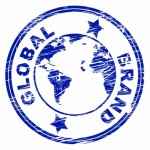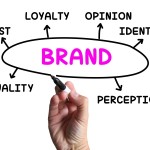
So, imagine your surprise when days turn into weeks (or months) and you don’t hear anything back from your prospect. Or, worse, your prospect sends you a hasty reply letting you know that they’ve decided to go into another direction.
Or, possibly worse, you receive a response stating that your prospect has decided not to embark any branding projects, because they don’t see the value in it.
Oh no! What went wrong? There’s probably a few things:
- You assumed that your prospective client understood all aspects of branding
- You assumed that your prospect understood how branding affects their bottom line over the long-term
- You didn’t explain why your services is worthy of the money that your prospect would need to spend
There might be other reasons, but there are the major three that you should address while you’re sending out branding proposals.
The perfect opportunity to address these concerns is while you’re composing a comprehensive proposal. Let’s take a look at what a comprehensive proposal entails for a moment:
The Problem Statement: Here, you’re letting the client know that you understand their concerns.
The Solution: Because, that’s why you’re in business, right? You need to solve the client’s problem.
The Benefits: This is exactly what the client wants to hear. Why should they invest in your service?
The Cost: When you set up the first three steps correctly, you’ll completely justify this section.
The Call To Action: The crucial, simple step that you’re probably getting wrong.
But, before we delve into the how-tos of each step, let’s back-track a bit and delve into the challenges of a branding service provider.
Translating Intangible Value Into Tangible Revenue
There are certain services such as SEO or social media that are easy to quantify, because these are the type of services that are very data-driven and are also very stat-heavy.
In other words, it’s easy to explain to your clients how these type of campaigns add value to their marketing.
But then, there are the services that are far more reliant upon concepts such as creativity and perception. As an industry expert, you might fully understand how and why a service such as branding adds value to your prospect’s business.
But, here’s the problem: Can you clearly and fully articulate this to your prospective client?
And, more than this, are you willing to give your clients a quick primer course in branding?
If you’re scratching your head a little, trying to figure out where you’d begin in explaining the basics of a product that is based upon imagination and perception, then imagine how your prospect feels when you blast them with promises of building and expanding their brand?
This leads to the first aspect that you’ll need to address within your proposal: The problem statement.
The Problem Statement
For the sake of this post, we’ll pretend that your agency is about to approach ABC company. ABC company in this scenario wants to increase their revenue by making sure that as many people learns about them as possible.
They’ve used traditional marketing and advertising in the past, but suddenly, they come across pitches from agencies such as yours, asking them the following:
We’ll create a comprehensive branding strategy that will enable ABC company to expand their reach and become the leader in their industry.
Now, as an industry insider, you might understand what this means, but does your prospective client understand what this means?
Chances are good that they won’t, and the decision maker who reads your message will say “Oh”, and then toss your proposal into a slush pile.
Or, they’ll roll their eyes as they read yet another indecipherable pitch loaded with industry speak, and they’ll throw your proposal in the trash (or, they’ll delete your pitch from their inbox).
Since you’ll never get ahead with prospects ignoring and throwing away your proposals, why not try this:
ABC has noticed that their competitors are being perceived as industry leaders who are in touch with the needs of their customer base. Their competitors are establishing an identity with their customers in a way that creates positive connection, service, and satisfaction. As a result, ABC is realizing a loss of immediate revenue, and lifetime customer value.
ABC needs a branding campaign that allows their company to create an enduring identity amongst their industry peers, and amongst their targeted customer base. The branding project will include a variety of tools that cohesively to create a perceived corporate image.
You can see a few things here:
- You’ve explained that you understand the gaps that the ABC company needs to fill, and how it’s killing their bottom line
- You’ve made a diagnosis of the problem so that your prospect understand that there is a solution
- You’ve offered a brief explanation of what the result of the project will entail
You could probably offer up a few more details, but the point is, you went beyond a one-liner spewing on about how great a branding project would be for your customer.
Because, they’re not going to believe that it’s great if they don’t understand what a branding project is, or why they’d need one in the first place!
So, now let’s look at the second step you’ll need to take in your proposal if you hope for your client to take something like a branding project seriously.
The Solution
Let us brand your company so that others can understand how great you are!
Okay, so you might not propose a solution in such simplistic terms (Or, would you?), but you can see how others might believe that the statement is a solution in of itself.
On the contrary, you’ll need to dig deeper if you want your prospect to understand the value you bring to the table, along with the amount of work involved in a comprehensive branding project.
Let’s take a glance at what you should be proposing in your solution statement:
ABC company will require (x amount) of consulting time in order for us to understand their corporate culture, and their values. After identifying these, we can begin to create materials and messages that further a carefully-crafted perception.
Examples of these materials will include marketing media such as letterhead, logos, websites, blogs, and emails. All of these will attract the type of customers who want to be loyal to a branded company who understand them and holds to the values that are important to the targeted customers.
Of course, you could tailor this section to your needs, but the point is to educate your prospect a little. Let them know that branding comes down to creating a perceived identity for their culture.
Let them know that you understand that they are looking for certain types of customers, and that certain types of customers are looking for a company to become loyal to.
Another benefit of fleshing out a solution statement is that you’re letting your client know that you care enough to explain what you have to offer, and how it’s going to heal their pain point.
This is crucial when you’re promoting such a creative, intangible service such as branding, since such much of branding is left up to individual perception.
Think of it: How many times have you read about a company in the news who tried to brand themselves one way, but due to poor public perception, they ended up with a completely different brand than the one intended?
This is the power of perception at work!
So, it’s your job to completely explain that you have the know-how and the tools to not only create the intended perception, but you also have the capability to make sure that every piece of media, PR, and marketing stays on the intended message.
The Benefits
This is one of the most important parts of your proposal. This is the part where the prospect starts to dig in and truly visualize the benefits of spending their money on your project.
If you were able to educate your client enough to get them to pay attention to your proposal up to this point, then you should congratulate yourself a bit!
But, not so fast! Don’t pop the bubbly just yet! You still haven’t explained the full benefits!
So, think long and hard about what would be the benefits of helping a company to identify and promote themselves with a brand.
Would they attract more of their customer demographic by age or spending habits? Are they going to attract customers who are looking for companies based upon social, religious, or economic values?
Will they become more respected by their industry peers? Would a branding project open the doors for vast expansion (which is particularly important for the company looking to become global)?
Think about your prospect’s sweet-spot. What’s their tick? What’s their “itchy area” that needs scratching? Find these and in the most ethical way, exploit every one!
Explain to the prospective client that your branding project isn’t about airy-fairy, pie-in-the-sky concepts. Let them know that the benefits of paying you for the project translates into money well invested!
The Price
This is where you can firmly answer another one of the most important questions your prospect will ask, in decimals and bank notes. Every product and service has a value assigned to the product, and yours will as well.
However, you’ll need to do a great job at quantifying what the client will be paying for.
As you might imagine, there’s literally many moving parts supporting a branding project. So, it might be helpful for you to group like-projects together, and then assign them a total price.
For example, lump together projects involving print media materials. Then, you might want to lump together your online products, consulting fees, and so on.
You understand what’s involved in the scope of your project. The key is to make sure that your client understands this as well.
In addition, don’t present the client with an unreasonable price point based upon the projected value of your branding project.
You might believe in what you have to offer, and you might believe that after your client is branded, their company’s valuation could explode. But, unless you have hard, cold evidence, then this is all speculation.
So, you have no right to charge your clients inflated fees. At least, not yet.
When it comes to actually formatting your pricing information, it’s suggested that you use a grid format. Don’t lump everything together in long-form paragraphs that are hard to comprehend and are also overwhelming to digest.
The point is to make your proposal inviting to read from beginning to end. A proposal that makes your prospect hyperventilate is one that will be ignored, each and every time!
The Call To Action
Whew! You’re 99 percent finished with your proposal. Now, it’s time to ask for your client’s business.
But, wait a minute? Isn’t that what you’ve been doing all along?
Yes, you have. But, you’ll need to do this again, because you need to make things crystal-clear that you’re ready to start your project, now.
You’ll also need to indicate to your prospect that there’s steps to take, and your call to action section will indicate the appropriate steps.
After all, you wouldn’t want for the prospect to think, “Yeah, this sounds like a good idea. Too bad I don’t know what to do next. Maybe this isn’t something I need to pay for right now”.
Since this is the opposite of what you want to take place, include a blurb such as this:
ABC Company can take the following steps to proceed with this project:
1. Accept the proposal as is or discuss desired changes. Strategy adjustments will be made as the project commences to improve effectiveness.
2. Finalize and sign contract.
3. Submit initial payment of first monthly fee. Once the contract is signed, we’ll kick off with a preliminary meeting to discuss SEO strategy and then start keyword research.
Do you see what you just did? You left no room for your client to guess at what to do next. If you sold your proposal properly, and if the client sees the value in what you have to offer, then they’re going to sign the contract and send you a deposit.
Now, you can pop open that well-deserved bottle of bubbly!
Summing Things Up
So, you’ve learned during this exercise that it’s not enough to bang out a line or two about how your branding project. You’ll need to engage in quite a bit of hand-holding and education, especially when it comes to a project that includes intangible (yet valuable) services.
You’ve also learned that there is a right way and a wrong way to format a proposal that will generate a response. It might seem as if you’re going through a lot of trouble, but the fact is that most of your competitors won’t bother with any of this.
The fact that you are willing to do so will move you to the front of the pack. Even if no other agency is pitching their services to your prospect, you’ll need to get on their radar in a way that makes them take you seriously.
Not only will you need to learn how to do this comprehensively, but you’ll need to this often, and quickly. Luckily for you, there’s a solution for cranking out professional-looking proposals, too.
You can check out professional the professional software that Bidsketch offers to agencies like yours. You won’t have to waste time trying to figure out how to format your proposals. The final product will look very professional, and noteworthy.
* All photos are courtesy of Freedigitalphotos.net





